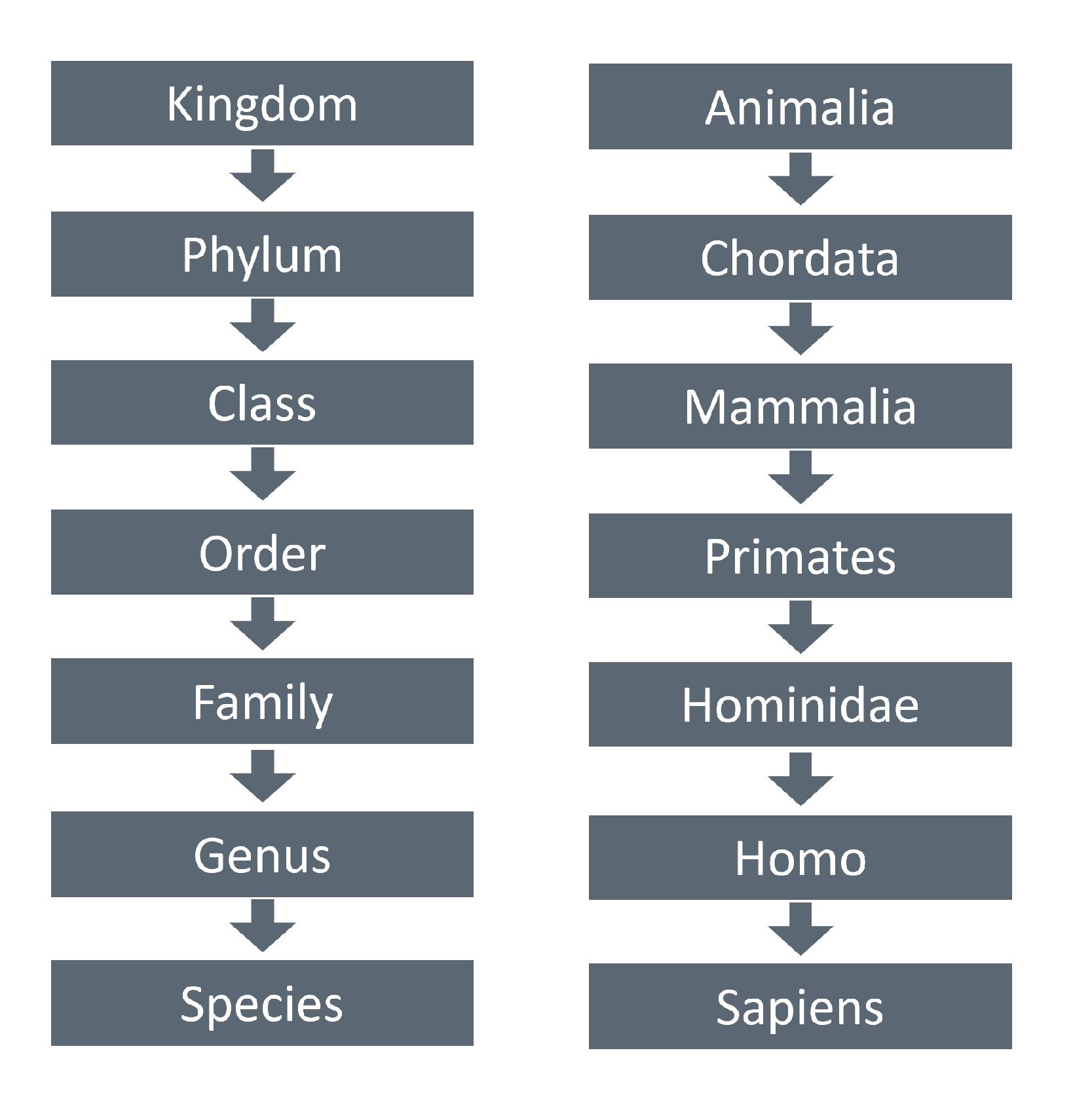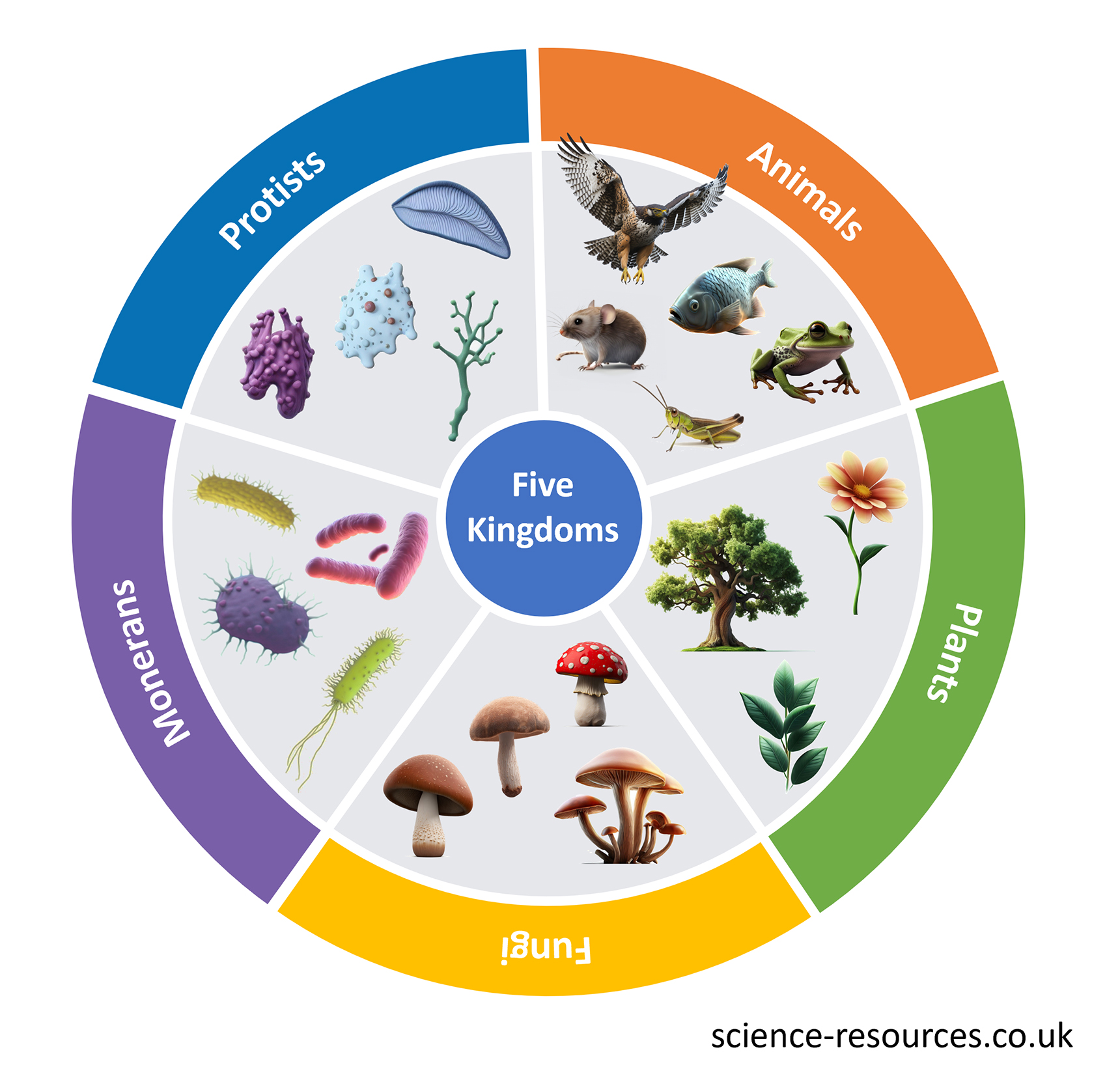Kingdoms and classifications
Why classify organisms? Classifying organisms Image showing how humans are classified. Modern classification These domains are then divided into the original categories of kingdom, phylum, class, order, family, genus and species. Image showing human classification using the modern hierarchy.
There are many kinds of living things in the world. Scientists group them to make it easier to study them. It helps to understand the world better and how different living things are related to each other.
The structure and characteristics of organisms are the basis of how humans classify them into different groups. A system of hierarchical categories was devised by Carl Linnaeus to classify the diversity of life. He divided all living things into five main groups called kingdoms: animals, plants, fungi, protists and prokaryotes. Species are then divided into smaller and smaller sub-sections called phylum, class, order, family, genus and species. The lowest level of classification is the species, which is the most specific and defines a single kind of organism.
Every species has a scientific name, called a binomial name, that is made of its genus and species. It is always written in italics with the first word capitalised but not the second word.
Example:
The image below shows how humans are grouped.
The binomial name for humans is Homo sapiens.
As technology and biochemistry have improved, so have the ways of grouping organisms based on their similarities and differences. For example, better microscopes revealed new details about the internal structures of some living things, which led to changes in their classification.
In 1990, Carl Woese suggested a new system of three domains, based on his discoveries from chemical analysis techniques. He found out that some organisms that looked alike were actually very different in their biochemistry.
The three domains are:

What is the Five Kingdom classification system? The five animal kingdoms Plants Fungi Protists Monerans The Five Kingdoms classification system
The Five Kingdoms of living things are a way of grouping living things based on what they share and how they are different. Scientists have made different ways of grouping living things into kingdoms, but the most common way is to group them into five kingdoms. These five kingdoms are:
Animals
The Animal Kingdom is made up of living things that are multicellular and eat other living things for food. There are more kinds of animals than any other kingdom, and you can find animals almost everywhere on Earth. Animals can move around and sense what is happening around them using various senses such as sight, smell, hearing and taste. Animals have changed over time to live in different places and eat different foods, which has made them very diverse.
Some examples of animals are birds, fish, mammals, reptiles, amphibians, molluscs, insects and many other living things. Some living things are defined as animals even if they do not look like animals, such as coral.
The Plant Kingdom is made up of organisms that grow in the ground and get nutrients from the soil through roots. Plants also use their leaves to get energy from the Sun, this is called photosynthesis. Plants need water, carbon dioxide and nutrients to live, but some plants have adapted to be able to get nutrients from insects, such as the Venus Flytrap. Plants are very diverse, just like animals. Some plants are very old and have lived longer than many animals, such as ferns, which are over 350 million years old and have survived when many animals, such as the dinosaurs, have become extinct.
The Fungi Kingdom is made up of living things that are very different from each other. Some are like bacteria, while others are more like plants. But what makes a fungus a fungus is that it gets nutrients from its surroundings by making enzymes. Fungi do not make their own food from the Sun like plants do. Some examples of fungi are mushrooms, mould and yeast. Fungi make spores to reproduce. They spread their spores in the air or water. Fungi are important for other living things because they are the decomposers. They eat the dead parts of other living things and break them down into basic nutrients.
The Protist Kingdom is made up of living things that are not animals, plants, fungi or bacteria. One example of a protist is algae. Protists have cells with a nucleus, unlike bacteria, which have cells without a nucleus. Protists are some of the oldest forms of life and have been around for millions of years. Before, the protist kingdom included all tiny organisms, but scientists made a new kingdom to separate protists and bacteria.
The Monera Kingdom is made up of single-celled organisms, usually called bacteria. Bacteria are everywhere, and are one of the simplest forms of life. Bacteria single-celled and can feed on almost anything, so they can live almost anywhere. Bacteria also live on and in many other living things, including humans. For example, our stomachs need bacteria to help us digest food.
Summary: